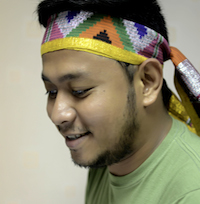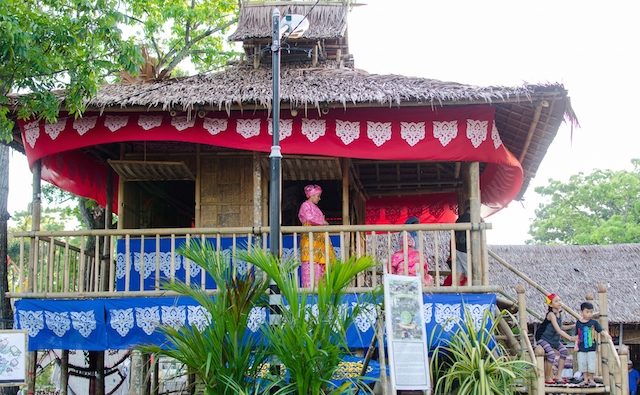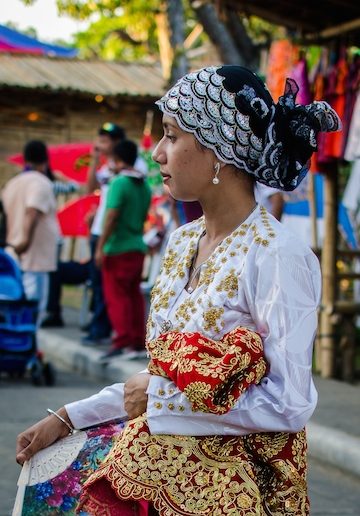SUMMARY
This is AI generated summarization, which may have errors. For context, always refer to the full article.
 This is a narrative about faith, sacrifice, bravery, heroism, and freedom that until now is as fresh and as vibrant as the colors of the paintings or the details of the sculptures that depict the life of the great people of Sulu.
This is a narrative about faith, sacrifice, bravery, heroism, and freedom that until now is as fresh and as vibrant as the colors of the paintings or the details of the sculptures that depict the life of the great people of Sulu.
It all started when Abubakar arrived in Buansa in Sulu and later – in 1457 – married the daughter of Rajah Baguinda, Dayang Param Isuli.
According to the tarsilas, Abubakar became a Sultan of Buansa and ruled over the Sultanate.
History suggests that Abubakar laid down the political structures of Islam as a “state religion” for the Tausugs, implying that it was the Tausugs who first had their own government in the Philippines through the Royal Sultanate of Sulu.
Tarsilas also indicate that the Royal Sultanate of Sulu was instrumental in the spread of Islam across Mindanao.
But even before this, the Tausugs were successful in establishing trade relations with China as early as 1417, during the Ming Dynasty.

The book The Geneology of the Sulu Royal Families allows us to have a peek into this relationship, including how a Sultan’s death in China started a Tausug diaspora. This pertains to the death of Sultan Batara who, along with two others, visited Chinese Emperor Yongle: “The Emperor Yongle was very sad at the news. He sent his minister to Dezhou to cope with the matter and granted the distinguished overseas guest a magnificent funeral that was as formal as for a Chinese King.”
Two of the Sultan’s sons, along with 8 others, remained in China to look after the tomb. The sons married Chinese locals and this started the diaspora.
For the first time in 600 years, the descendants of Sultan Batara visited Sulu in 2005.
Weapon against colonialism
Records show that the Tausugs’ strong faith of the Islamic teachings under the Royal Sultanate of Sulu was their primary weapon against the Spanish conquerors.
A story about Tausugs is incomplete without the tale about their bravery.
It was the Tausugs who were at the frontline in the defense of Mindanao, fighting it out with their own blood in the name of Islam and freedom.
The bloody revolution was fought in the name of the Bangsamoro, and a future that is free.
This is best illustrated in the war of Hadji Kamlon, the Tausug guerrilla who, along with an army of gallant fighters, defended Sulu by waging war against the Japanese from 1948 to 1955. Records say Kamlon’s revolution spoke of how Tausugs determination and gallantry can still triumph despite lack of resources.
It is this bravery and courage that make us proud of being part of the Sultanate – a distinct brand of bravery and courage that served as the undying flame that inspired the struggle of the Bangsamoro for self-determination and independence.

Time, however, took over and consumed the rule, and the influence of the Sultanate as a system was challenged by the changing political landscape.
However, what it failed to put off was the spirit of a proud, brave people.
One only has to look at the eyes of a Tausug father, mother, and child and see that the flame remains continues to burn to this day.
This bravery and courage are reflected by the masterpieces of National Artist for sculpture Abdulmari Asia Imao, the only Tausug and the only Muslim recipient of such award to date. (Editor’s note: Imao died on December 16, 2014.)
The spirit and the aspirations of the Sultanate are reflected through the collective life of the Tausugs day in and day out.
It is heard through the songs sung by mothers to their children or from the stories heard by children from their fathers.
These are the early morning verses spoken by wives as they brew kahawa sug, the aroma of which awaken the lazy mornings battered by a gentle rain or tired afternoons.
This bravery and courage are seen as men sail off to the sea – in their vintas . They are the “masters of the sea” and the warriors of the Bangsamoro independence.
This bravery and courage are gleaned from the collective aspiration of the Bangsamoro for genuine independence.
Growing up, I remember having the prefix ‘Datu’ in my name. My sisters, on the other hand, had ‘Dayang’.
We were the little prince and princesses of a family that traces back its roots directly to descendants of Sultan Mohammad Pulalun, father of Sultan Jamalul Ahlam Kiram.
We were the royals. We were part of the royals. The family is proud of this. I am proud of this.
Who would not be? – Rappler.com
Amir Mawallil is the executive director of the Bureau of Public Information of the Autonomous Region in Muslim Mindanao. He is the founding chairperson of the western Mindanao chapter of Young Moro Professionals Network (YMPN), the largest non-governmental organization of Muslim professionals in the country.
Add a comment
How does this make you feel?
There are no comments yet. Add your comment to start the conversation.